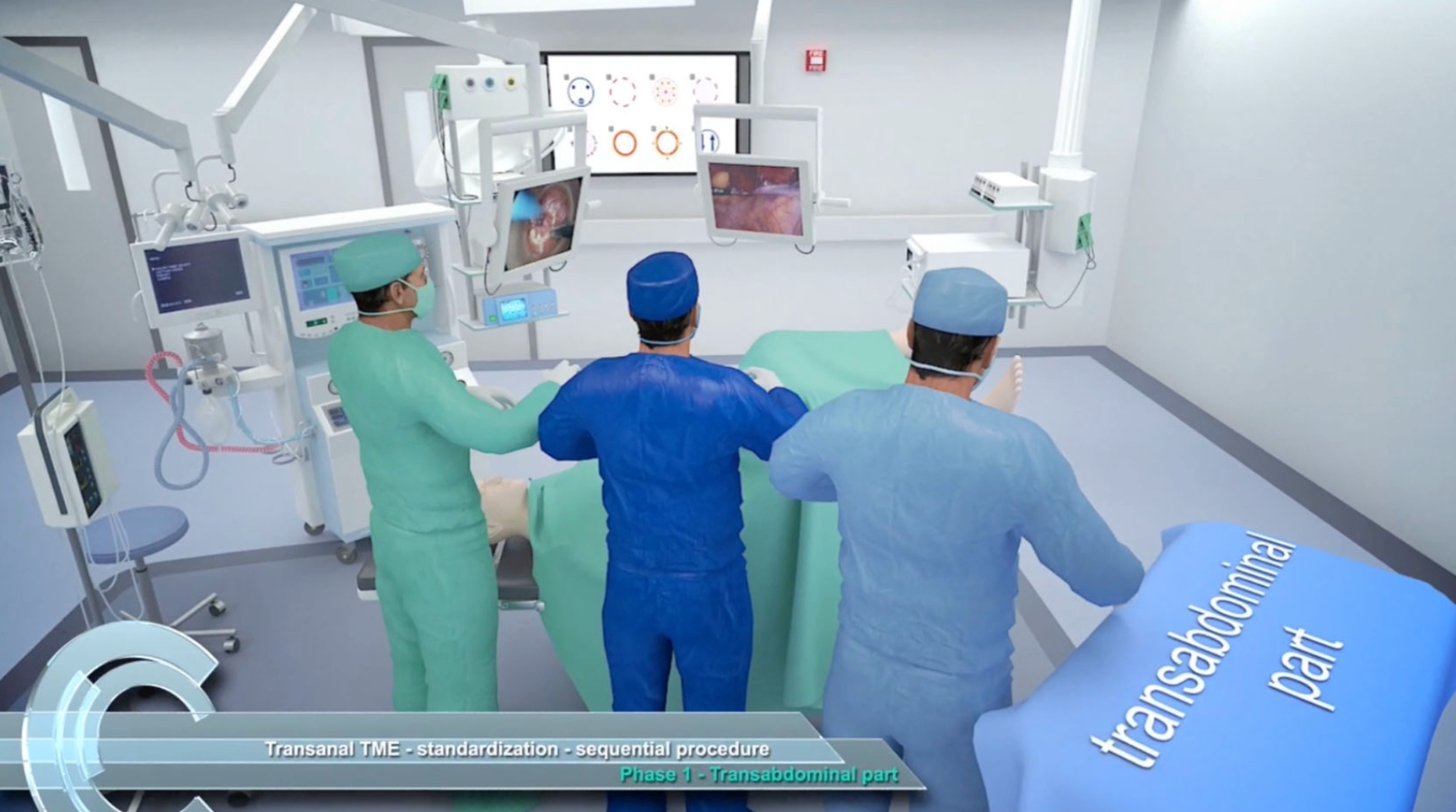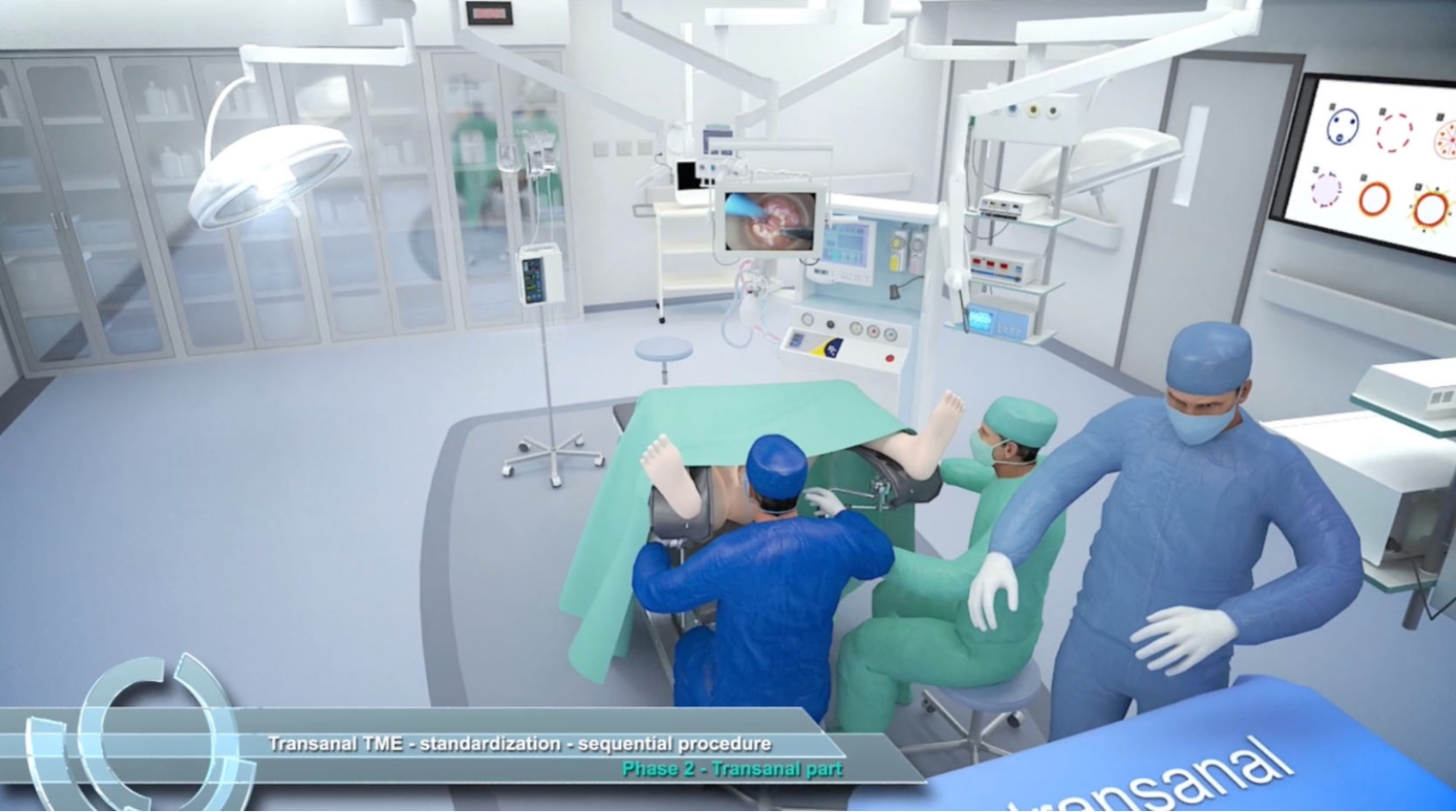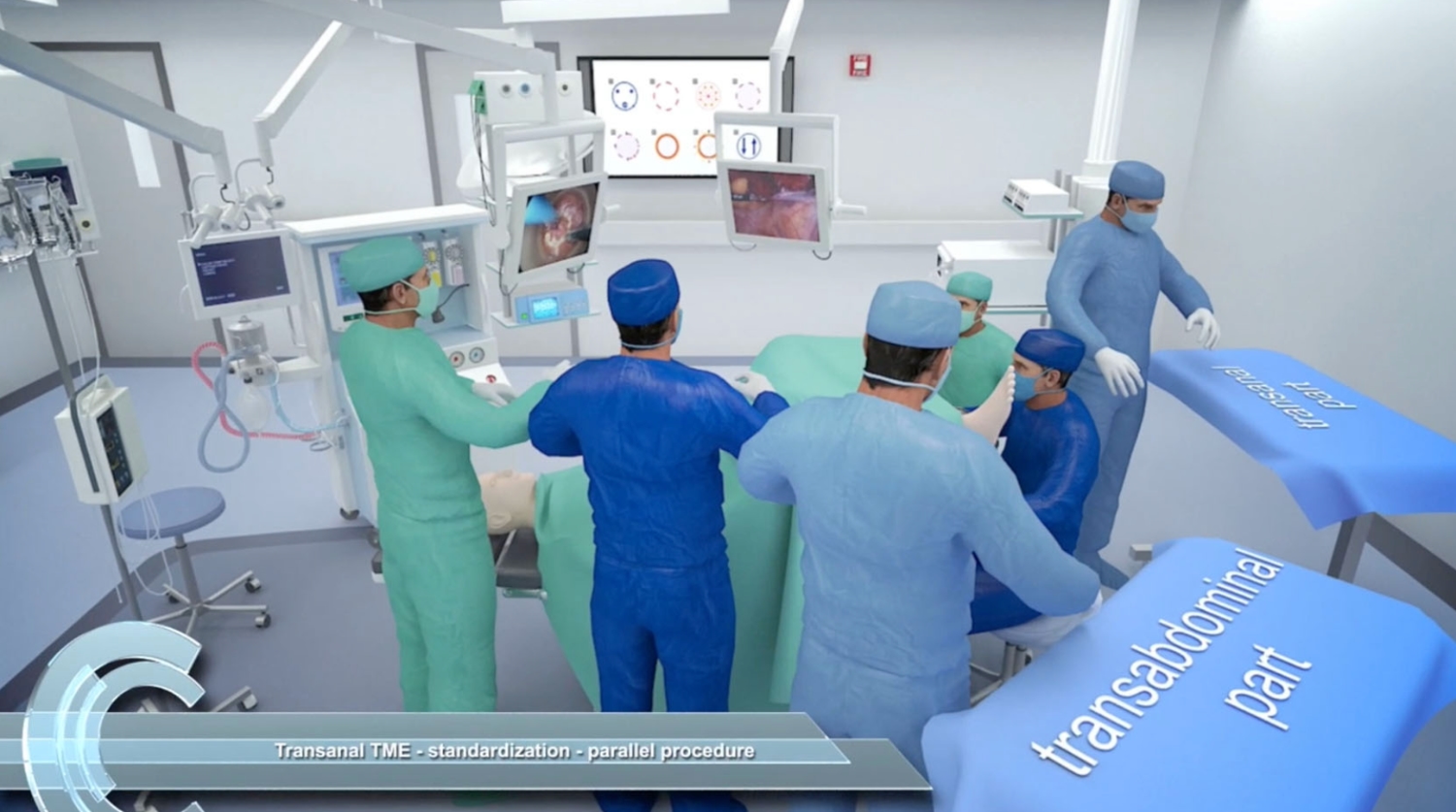OR Set-up
Antonio Lazy
Joep Knol
When performing a TaTME-procedure, it’s crucial to be well organized and work as a team. There is an ideal set-up for the abdominal part and for the transanal part of the operation after which the operation can be performed efficiently and precisely for optimal results.
The procedure can be performed by one or two teams, with all steps sequently or synchronously.
In most cases dissection of the abdominal part is done first to avoid creation of a retroperitoneum and also to find the nerves from above. Splenic flexure mobilization is performed in most patients.
A two team approach allows a better way of traction and counter traction and saves a lot of operation time at the end of the procedure.
Sequential steps ( one team ) :
When the operation is done by a single team, all steps must be performed sequentially. The surgeon works while an assisting surgeon or resident operates the camera. One scrub nurse and one circulating nurse complete the team. The trocars are positioned like a sigmoid resection. After mobilization of the splenic flexure the patient is positioned in Trendelenburg position and dissection of the sigmoid and upper rectum is started.


Synchronized steps ( two teams ) :
When the operation is done by two teams, all steps can be performed synchronously. In both teams the surgeon works while an assisting surgeon or resident operates the camera. Two scrub nurses and one circulating nurse complete the team. The transabdominal team starts with a splenic flexure mobilization after which the patient is positioned in Trendelenburg position. Next step is dissection of the Inferior Mesenteric Artery and clipping of this structure. At the same time the transanal team starts with the procedure. The position of the legs is never a real problem in the TaTME technique.


